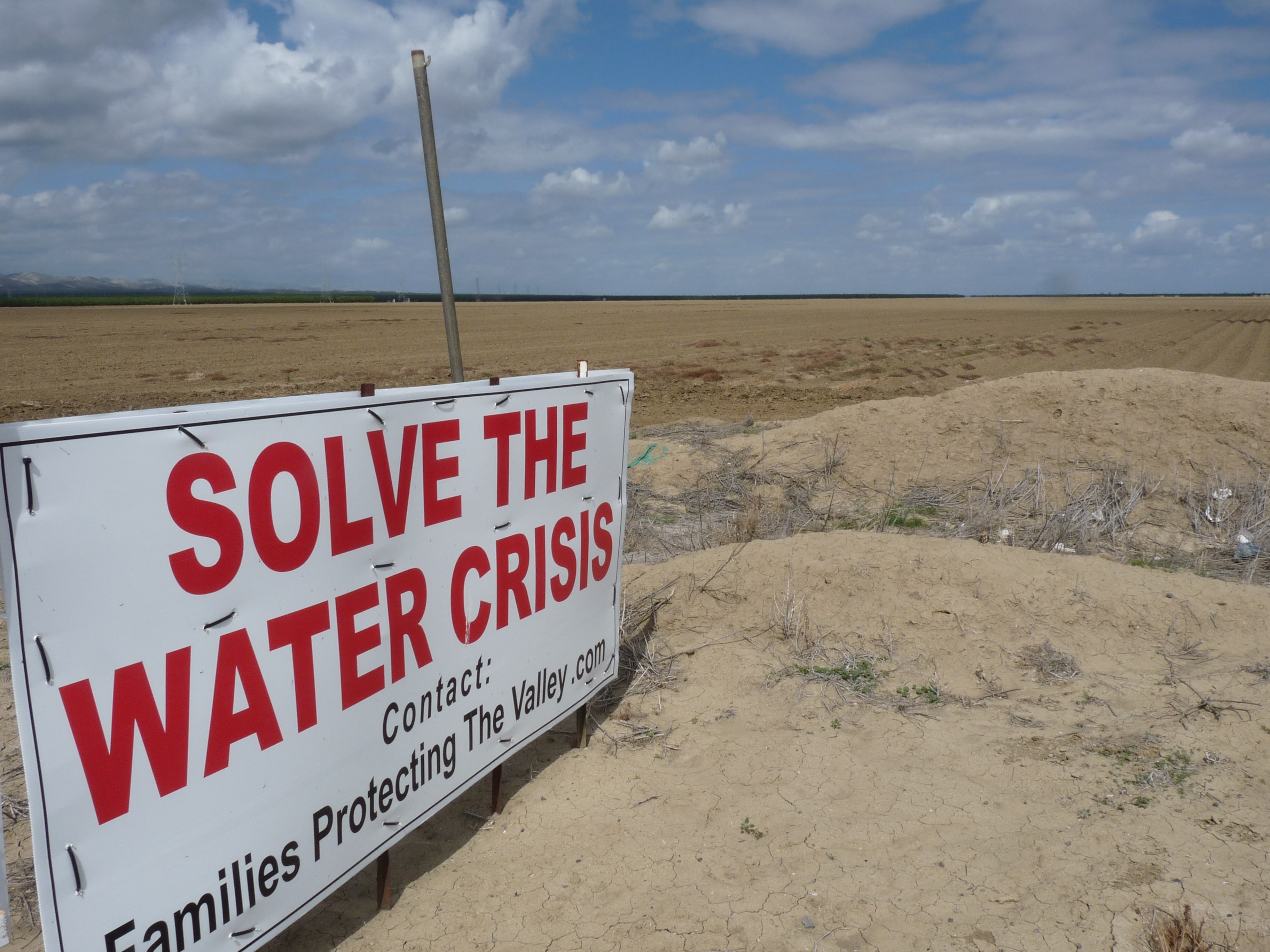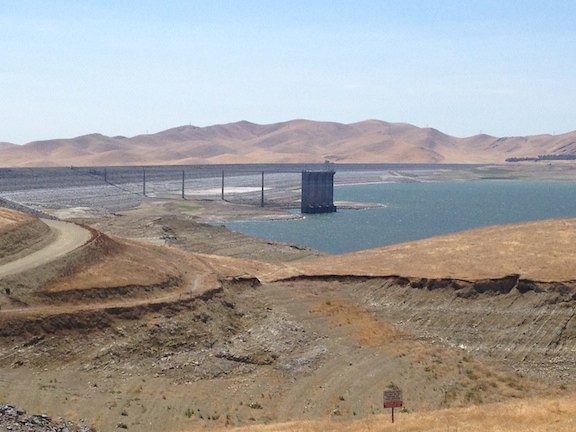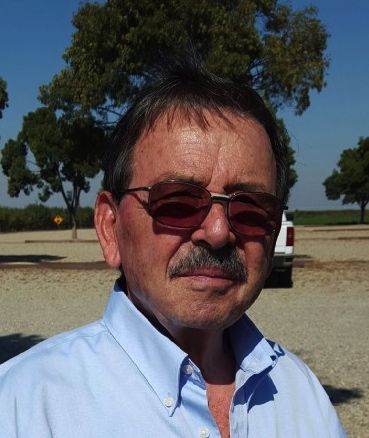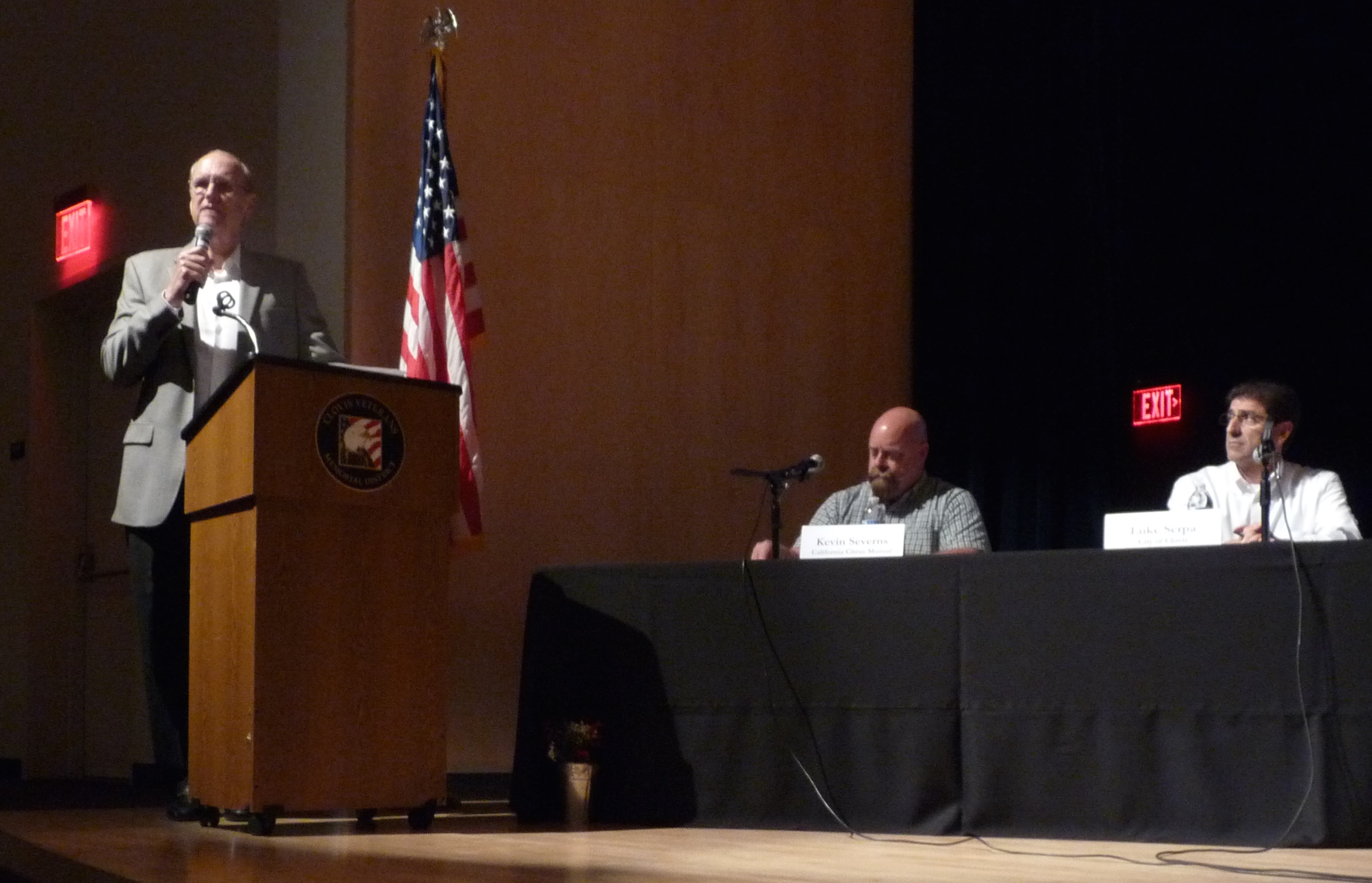Ryan Jacobsen on 5 Percent Water Allocation
Fresno County Farm Bureau CEO on Water Allocation
By Patrick Cavanaugh, Deputy Editor
California Ag Today staff interviewed Ryan Jacobsen, CEO and executive director of the Fresno County Farm Bureau moments after the Bureau of Reclamation announced only 5 percent of contracted water would be allocated to Federal surface water users south of the Sacramento Delta during this El Niño year.
California Ag Today: Forget how you feel about the Bureau of Reclamation’s initial 5 percent allocation for Federal water users. How many times can we say, “Frustrated?”
Jacobsen: Absolutely just despicable—the announcement we heard earlier today. The frustration is that we’ve continually been told over the last couple of years with zero percent water allocations that it’s been Mother Nature.
Even though it’s not necessarily the big bang year we were hoping for in northern California, Mother Nature provided. We’ve seen the reservoirs overflowing. We’ve seen the reservoirs flood-releasing, and here we are with a five percent allocation. We saw outflows in the delta this winter that exceeded the 300,000 acre/feet a day, and yet we weren’t doing anything to capture it. So, it’s just frustration, frustration, frustration that here we are—more of the same—and what does this mean long-term for California agriculture? We can’t be viable without a surface water supply, and when Mother Nature provides, unfortunately the federal government’s not trying to collect it.
California Ag Today: What is going on? Why are they doing this? Do you have any theories?
Jacobsen: Obviously, it has so much to do with the environmental side and the belief that the federal government is doing all they can to protect these species up there. We have seen that it’s doing no good; the fish species are seeing no recovery; it’s actually going in the opposite direction. It is plain mismanagement. The unfortunate part is sound science isn’t even going into this right now; it is purely the emotional side of whoever decides to pull the trigger on the federal side. And here we are on the resulting end, losing millions and millions of dollars in our economy, idling more farmland—the most productive farmland in the country—in the world—and losing the jobs that are associated with it.

San Luis Reservoir Suffering the 2015 Drought is now barely half filled even after the El Nino rain, runoff and massive flood releases from Shasta an Oroville
California Ag Today: You speak brilliantly on this whole situation. Way more water has flowed out to the ocean than needed for the protection of any of the species or the environment, so who are they listening to?
Jacobsen: Right now, this is simply the administration’s decision. Reclamation falls under the federal side of things, so obviously, ultimately, it lays on the President’s desk. If we talk about resolution: by 9 a.m. tomorrow morning, we could see a resolution to this whole issue. If Congress would get their act together and pass some kind of bill, get it on the President’s desk and get it signed, we could see some resolution.
Unfortunately, here we are, April 1: a good portion of the precipitation season is now behind us, the high flows through the delta are pretty much over. We still have healthy reservoirs up North, but unfortunately it doesn’t mean anything for us down here because we can’t convey it through the Delta to get here. That lack of and the lack of ability on the federal side to make the decisions that would allow us to pump that water makes this just another year of doom and gloom. Again, how much more of this can we take? I think the long-term outlook for those farmers with permanent crops who have tried to scrape by, has to be, “Is this even viable for us to continue to do this anymore?” ‘Because Mother Nature provided, and yet we don’t see the water.
California Ag Today: Very bleak. Ninety-five percent of normal snowfall, too.
Jacobsen: The percentages in northern California, while good, weren’t the El Niño banner year we were expecting. The season looked bright, like it was going to be good. Yet, the fact of the matter is that during the months of January, February and March, when these just incredible numbers of high water flows were going through the Delta, pumps were pumping in single digits. And that’s not even close, or anywhere near where they should have been.
I think the misconception is when we talk about the water that is taken from the Delta, it’s such a small percentage, particularly during those high-flow times; it would have meant no difference to water species. It’s just a frustration that we continue to be bombarded by these environmental restrictions that are having no good effect on the long-term viability of these species they are trying to protect.
California Ag Today: What is the economic impact of these water cutbacks on the Central Valley?
Jacobsen: Well, when you look at the five percent allocation, we are ground zero. Fresno County, right in the heartland of the Central Valley, is ground zero. We are going to see probably in excess of 200,000-250,000 acres of land continue to be fallowed and the loss of the tens of thousands of jobs associated with that, and millions, tens of millions of dollars. It’s obviously a very dire situation when it comes to long-term viability here in the Valley.
California Ag Today: Because they are going to hear a lot of outrage from us, do you think the Bureau of Reclamation would go to a 20 percent water allocation? Farmers must be thinking, “We got to get the seeds ordered today for the crops.” Is there any hope for an increase in water, or do you think farmers just can’t bank on it?
Jacobsen: It’s already too late. For this season, it’s already too late. It is April 1 already, and, unfortunately, this is not a joke. This decision is about one month-and-a-half late. I think the Bureau of Reclamation was hoping the numbers would improve magically. They didn’t.
The five percent allocation, while said not to be our final allocation, is likely to be close. It won’t go up to 20; it won’t go up to 15. Maybe if we pray enough, it may go up to ten, but that would be on the high side. Right now, it looks very realistic that five percent is where we end up, where we are going to stand for the year.
California Ag Today: Okay, I know growers who have planted tomatoes in Fresno County, thinking, “Hey, we gotta get water.” They’re not getting it.
Jacobsen: They’re not getting it, no. And lack of surface water supply continues to make a huge dent in our groundwater supply, so this just can’t continue the way it is going. Plus, upcoming implementation of the Sustainable Groundwater Management Act (SGMA), combined with the lack of federal surface supplies, will absolutely hammer farms here in the Valley.





 Cavanaugh: Well, it’s laughable—only 5 percent for San Luis, with all the water in the system from the El Niño year! You’re still not answering the question. None of this makes sense to anyone who is a critical thinker. Can you please explain, other than preventing salt-water intrusion and protecting species, why so much more water—over the top—was sent out?
Cavanaugh: Well, it’s laughable—only 5 percent for San Luis, with all the water in the system from the El Niño year! You’re still not answering the question. None of this makes sense to anyone who is a critical thinker. Can you please explain, other than preventing salt-water intrusion and protecting species, why so much more water—over the top—was sent out?

 Les Wright
Les Wright


















